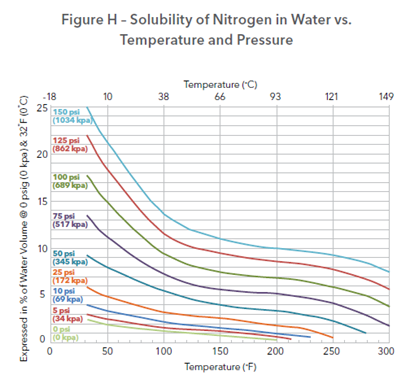 Hydronic heating and cooling systems must be filled with fluid. No air should be bound inside of the system except for the compression or expansion tank.
Hydronic heating and cooling systems must be filled with fluid. No air should be bound inside of the system except for the compression or expansion tank.
Today the R L Deppmann Monday Morning Minutes begins a series on air control in closed hydronic systems. We will start with talking about eliminating and managing air right from the start.
The Problems Air Will Cause in Hydronic Systems
The goal of the fluid in a hydronic heating system is to take heat from the source such as a boiler and provide that heat to a terminal unit or heat exchanger which will remove it and use it to heat a space. In a chilled water system, we are transmitting cold water to a heat exchanger and that water will accept heat removed from the space. In both cases, the fluid transmitted is liquid and should not have any air in it.
What happens if there is air in the liquid in a closed hydronic system? When the coil or heat exchanger contains air, it can reduce or stop the flow rate and cause the coil to transfer less BTU’s. The space cannot maintain the temperature required and people complain.
A big problem could occur in northern climates. If the cold outside air is in an air handler unit, the reduced flow rate could cause the fluid in the coil to freeze and damage the coil or heat exchanger.
Air in the piping system will also reduce flow and therefore heat transfer. And of course, air in a chiller or boiler could damage the product as well as the space and people around the product. The only place we should have air is in the expansion tank.
Ten Things to do During Design and Startup for Great Air Management
1. Proper Fill Pressure: There are stories over generations about owners calling us and complaining of regular “no heat” zones. Maintenance staff regularly carry hoses to “bleed” zones and get the heat back in that area. Make sure the fill pressure required at the PRV, and expansion tank show up on the plans and in the mechanical room documentation. Click on one of the articles below for more information.
2. Proper Expansion Tank Location: Make sure you are pumping away from the expansion tank and have the proper pump location. Pumping into the point where the expansion tank is tied to the system can create problems in 99.9% of the systems. Click on one of the articles below to read more.
3. Proper Velocity for Air Control: Bigger is not always better when designing a hydronic system. Air entrained in the system fluid will tend to remain entrained if the velocity is greater than 2.0 feet per second (FPS). In variable flow systems, the velocity will drop below this level but try to meet it in the full flow design. It will help the contractor purge the system of air. We want the air to get back to the mechanical room and let the air separator do its job. Click here for more information.
4. Proper Air Vent and Purge Valve Locations: In our air control and expansion tank sizing seminars we may get a little smile when we say, “think like air.” Air rises and does not like to go down in pipes. Those high points are a prime location for air vents. The end of zone piping loops will be a place for purge valves used during startup.
5. Proper Air Vent for the Job: Make sure you use the right air vent for the application. If all you say is “air vent,” you will get the cheapest thing available. Click on the articles below for more information.
6. Purge by Zone When Possible: Contractors may spend days and weeks chasing air in the system at startup. There is value to circulating one zone at a time, purging the air, and then closing off that zone while you purge the next. This way you do not just push the air from one zone to another. This assumes the engineer provided shutoff valves at the various zones.
7. Purge with Heated Water: Air will release at warmer temperatures. This is not always possible but the hotter the water, the better the purge. Visit the B&G air control technical manual TEH-1196C for more information.
8. Pipe from the Bottom of High Point Mains: This is old school but keep the air in the piping and not in the coils. The vents are in the piping. Underslung piping may help in the fight against air.
9. After Repair, Fill Before Opening the Service Valves: When someone does service on a coil, they will likely drain the coil. It is now full of air. All that air ends up in the system when the contractor opens the valves. If possible, fill the repaired coil with fluid before opening it up to the system.
10. Use Proper Mechanical Room Air Separators: This will be the topic of the next couple R. L. Deppmann Monday Morning Minutes.











